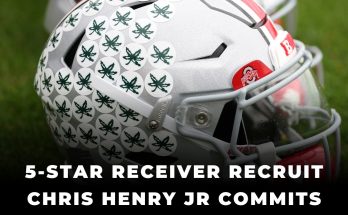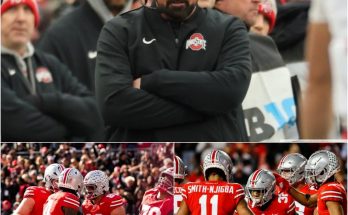The Decision Not to Enter the NFL Draft: A Texas Football Player’s Future
Every year, college football players are faced with a difficult decision: whether to enter the NFL Draft early or return for another year of college football. The allure of the NFL, with its multi-million dollar contracts and prestige, is undeniable. However, the decision to forgo entering the draft and instead return to college can have profound implications for a player’s future, both professionally and personally.
This year, as the list of underclassmen declaring for the NFL Draft has been released, one name notably missing from the list is a Texas football player who many had expected to take the leap into professional football. Despite an impressive season and significant potential, this player has chosen to stay in school, opting for another year of development rather than jumping into the professional ranks. The decision has caught the attention of both Texas fans and NFL analysts, leading to questions about the reasoning behind it and the impact it could have on both the player and the Texas football program.
In this article, we will explore the possible motivations behind such a decision, examine how it could affect the player’s future draft prospects, and consider what it means for the Texas Longhorns as a program. We will look at several factors that play a role in this decision-making process, including the player’s readiness for the NFL, team goals, financial considerations, injury concerns, and the broader implications for both the player and the program’s trajectory.
The Decision-Making Process: Why Some Players Choose to Stay in School
The decision to enter the NFL Draft is one of the most consequential choices a college football player can make. While there is no single “right” answer for every athlete, the factors that influence this decision are often complex and multifaceted. Here, we explore some of the most common reasons why a talented underclassman might choose to return to college for another season rather than declare for the NFL Draft.
1. Development and Maturity
While many college athletes have the physical tools necessary to compete at the next level, the NFL presents a vastly different and more competitive environment than college football. Even for standout players, the transition from college to professional football can be overwhelming without sufficient development and preparation.
For some players, another year of college football may offer a critical opportunity to hone their skills, improve their physical conditioning, and refine their technique. For example, a player who has shown flashes of brilliance but has not yet mastered a key aspect of their game (such as route running for a wide receiver or decision-making for a quarterback) might benefit greatly from an additional year of experience at the collegiate level.
Returning to Texas for another year allows the player to continue developing within the college system, under the guidance of coaches who are invested in their growth. This can be especially important for players who feel that they need more time to mature and sharpen their skills before stepping into the pressure cooker of the NFL.
2. Injury Concerns
Injury concerns are another key factor that can influence a player’s decision to stay in college. Injuries are an unfortunate part of football, and for some players, the risk of entering the NFL Draft while still recovering from an injury or facing a history of past injuries can be a deterrent. The medical staff at a college program, particularly one with the resources of Texas, can provide the player with the support they need to continue recovering and preparing for the next step.
Additionally, returning to school allows the player to stay healthy and put together another full season of play. This extra year of college football gives them a chance to improve their stock and prove to NFL scouts that they are capable of handling the physical demands of the professional game. If a player is coming off an injury or has concerns about their durability, staying in college for one more year can provide an opportunity to enter the NFL Draft with more confidence in their physical readiness.
3. Financial Considerations and Timing
While the financial incentives of entering the NFL Draft can be compelling, some players may choose to delay their professional careers for strategic reasons. The NFL is a business, and players are often not in control of when they are drafted or where they are selected. A player who declares for the draft too early and is selected in the later rounds may not receive the same level of financial security or contract guarantees as a player who returns for another year and improves their draft stock.
By staying in college, a player can further enhance their value and potentially secure a higher draft position the following year. This can be particularly important for players who are on the cusp of being top-round picks, as a higher draft selection can result in a more lucrative contract and a more favorable position within an NFL team’s roster.
In some cases, players may also choose to delay their entry into the NFL Draft for personal reasons. They may want to finish their degree, continue developing their game in a familiar environment, or simply enjoy another season of college football. While this may not seem like the most immediately financially advantageous decision, it could ultimately be in the player’s long-term interest.
4. The Chance to Compete for a National Championship
The desire to win a national championship and leave a lasting legacy at the college level is another powerful motivator for many players. Texas football, with its storied history and passionate fanbase, offers players the opportunity to compete for high-profile titles and make a significant impact on the program’s future.
For some players, the chance to return to Texas for one more season and make a run at a national championship can outweigh the immediate allure of the NFL. This is particularly true for players who feel they have unfinished business or who want to take their team to the pinnacle of college football before transitioning to the pros.
Returning for another season gives the player the chance to lead the team, build on their leadership skills, and achieve something meaningful at the collegiate level before moving on to the NFL. In some cases, the chance to compete for a championship can provide extra motivation and a sense of fulfillment that extends beyond personal accolades or financial considerations.
The Impact on the Player’s Draft Prospects
For many players, the decision to stay in college for another year is rooted in the belief that they can improve their draft prospects and increase their long-term earning potential. However, the outcome of this decision is not always predictable. Several factors play a role in determining how a player’s draft stock will change over the course of an additional season of college football.
- Development and Improvement: The most significant factor in determining whether a player’s draft stock will rise is their performance during the upcoming season. If the player can build on their previous achievements and continue to show improvement, their draft stock is likely to rise. The extra season provides an opportunity to develop skills, build on strengths, and address weaknesses, which can be pivotal when it comes time for scouts to evaluate them.
- Injury Risk: On the other hand, staying in college also carries the inherent risk of injury. A significant injury during the player’s final season of college football could significantly hurt their draft stock, especially if the injury is severe enough to require extensive recovery time. Players who decide to stay in school must weigh this risk carefully, as an injury could derail their career prospects and push their entry into the NFL back by another year or more.
- Draft Position and Timing: A player who returns for another season in college must also consider how the timing of their draft entry might affect their career trajectory. The NFL draft is a constantly evolving landscape, with team needs shifting year by year. A player who was previously considered a potential first-round pick might find themselves slipping down the draft boards due to changing team needs or the emergence of other prospects.
For some players, a return to college may make them a top prospect in the following year’s draft. For others, staying an additional year may not have the desired effect, as other emerging players take their place in the spotlight.



